The subject of a controversial customs seizure by South Australian colonial officials in 1841, the merchant ship Ville de Bordeaux was originally built for the French Navy in 1836. Upon completion, the vessel was sold and converted for a pelagic (open ocean) whaling voyage, which brought it to Australian waters in 1840. In Sydney, Ville de Bordeaux was acquired by French-Australian merchants who retained the vessel’s French registry and intended to re-sell it in an Asian or Indian port. Following a failed attempt to dispose of the ship in Indonesia, Ville de Bordeaux’s supercargo embarked on an illegal inter-colonial trading voyage in Australian waters. In an attempt to avoid being inspected and detained by South Australian customs officials, the ship’s officers hastily departed Holdfast Bay, ‘kidnapping’ one of the customs officers in the process. Following a ‘mutiny’ by a number of its crew, Ville de Bordeaux returned to shore and was impounded. A series of court battles and inquests in subsequent years determined the vessel was operating illegally, but also reimbursed its original French owner. In the meantime, the ship itself fell into disrepair and was eventually broken up in Port Adelaide.
Origins
Built for the French Navy in the coastal community of Bordeaux, France in 1836, the ship Ville de Bordeaux was sold to commercial interests upon completion and outfitted as a pelagic whaling vessel. The hull was constructed of oak and copper-fastened, had a displacement of 826 tons, was sheathed in copper, and reportedly cost £30 000 to build. On 12 December 1837, Ville de Bordeaux departed France for a whaling voyage that included Pacific-based hunting grounds around the Sandwich Islands (Hawaiian Islands). The ship made a brief stop at Akaroa, New Zealand in January 1840 before moving on to Sydney, where it arrived on 28 March. Upon disembarking in Sydney Harbour, Ville de Bordeaux’s commanding officer, Captain Pierre Largeteaux, informed customs officials that his vessel was in need of repair. Shortly thereafter, the ship was inspected, declared unseaworthy and condemned. Between April and June 1840, Largeteaux sold both Ville de Bordeaux and its cargo of 3300 barrels of ‘black oil’ and ‘a few tuns’ of whalebone. It would later be revealed that Largeteaux failed to inform the ship’s owner August Davide of his actions, sold the ship and cargo illegally, and pocketed the proceeds. He hastily departed for India a short time later.
The ship was purchased by Sydney-based merchants Didier Numa Joubert, Geslin Bernard, and Jeremiah Murphy. Joubert reportedly held dual French and British citizenship, and was encouraged by authorities in Sydney to maintain the vessel’s French registry and place a French captain in command. As an interesting aside, Joubert and Murphy would help create Australia’s first documented photograph (a daguerreotype of the intersection of Sydney’s Bridge and George Streets) in May 1841. Joubert would also later become the first mayor of the New South Wales settlement (later Sydney suburb) of Hunters Hill.
Voyage under Australian Ownership
Following Ville de Bordeaux’s sale, several of the French crew were paid off and British sailors hired to take their place. The new crew, comprising 35 men, was predominantly British in composition, but retained holdovers from the original French complement. In a unique (if not utterly unorthodox) arrangement, the supercargo Thomas Lyell Symers appears to have had overall command of the vessel, while supervision of its day-to-day operation fell to Captain Pierre Parnelle, a French national and lieutenant in the French Navy. The unusual command structure, when combined with divisions among the crew’s nationality, almost certainly created and/or contributed to problems that were to plague the ship during its brief tenure operating in Australian waters.
Trouble started before Ville de Bordeaux departed Sydney. A number of crewmen refused to fulfil their duties while the ship was still in Sydney Harbour; consequently, a contingent of sailors from HMS Favourite were transferred to Ville de Bordeaux to help hoist sail and get underway. The ship departed Sydney on 27 August 1840 and made a course for Lombok (Indonesia) via the Torres Strait and Port Essington. Officially, Ville de Bordeaux was engaged in a speculative voyage to Asia and India. In reality, Symers was under orders to dispose of the ship in a foreign port to the highest bidder as soon as possible. Upon arriving at Lombok, Symers attempted to sell the vessel, but was unsuccessful. He then directly violated his instructions for the voyage and purchased a cargo comprising 130 tons of paddy (unmilled rice), 300 bags of milled rice, 25 Timor ponies and other Asian merchandise, with the intention of selling all or part of these items at the Swan River colony in Western Australia. Before Ville de Bordeaux departed Lombok it was visited by Walter Watson Hughes—a ship captain and opium trader who would later make his fortune from the Moonta mine and become a founding benefactor of the University of Adelaide—whose own vessel, the brig Hero, was also in port.
Ville de Bordeaux departed Lombok and sailed for Western Australia, arriving at Fremantle on 29 November 1840. While there, the crew offloaded and sold some of the ship’s cargo of ponies to the colony’s settlers and merchants. These activities were reportedly sanctioned by the Western Australian government, despite being in contravention of Great Britain’s Navigation Acts, which forbade foreign-owned or registered vessels from trading with, or ferrying cargo between, ports in possession of the British Empire. Customs officials also purportedly allowed Ville de Bordeaux to transport a small government consignment of flour, beef and pork to the colonial settlement at King George Sound (Albany). It was here that Captain Parnelle was replaced by Henri Biron, a former Enseigne de Vaisseau (First Officer) in the French Navy whose command was officially endorsed on the vessel’s registry by the Resident Magistrate in Albany. Biron would command Ville de Bordeaux during its transit from King George Sound to its next port-of-call: Holdfast Bay in South Australia. Perhaps as a result of Biron’s appointment, some of the vessel’s British crewmen began to exhibit ‘mutinous’ behaviour. The majority, however, continued to follow orders.
Customs Incident
After spending a brief period of time at King George Sound, Ville de Bordeaux got underway and sailed east for Holdfast Bay, where it arrived on 29 January 1841. Shortly thereafter Symers, acting as supercargo, made arrangements to purchase approximately 2000 sheep from a local grazier. These were to be loaded aboard the vessel and (according to Biron) transported to the French territory of Île Bourbon (Réunion Island). Symers also notified the Customs House in Port Adelaide of Ville de Bordeaux’s arrival, but failed to produce the ship’s papers. In the meantime, one of the ship’s crew, able seaman John Lloyd, had written to the Resident Magistrate in Adelaide and, upon receiving a response, refused to obey orders while under Biron’s command. Twelve additional crewmen joined Lloyd, were removed from duty, and confined to the ship on a diet of bread and water.
On the evening of 12 February, Ville de Bordeaux was visited by South Australia’s Collector of Customs Robert Richard Torrens. Torrens may already have been alerted to the content of Lloyd’s letter, and suspected the cargo of sheep (which had yet to be brought aboard) was intended for Fremantle in clear violation of the Navigation Acts. After two failed attempts to speak with Symers, who was reportedly ashore with Ville de Bordeaux’s documentation, Torrens informed the ship’s Second Officer John William Charlton that the cargo of sheep would not be allowed aboard. Further, the vessel was to be brought to Port Adelaide to undergo a thorough inspection. On the morning of 14 February, customs officials John Anthony and J. Lockyer boarded Ville de Bordeaux under orders from Torrens and Governor George Gawler to place the vessel under the command of a pilot and proceed to the Port.
What happened next varies among historical sources. According to Ville de Bordeaux’s logbook (maintained by Second Officer Charlton), the crew were ordered to weigh anchor when Anthony and Lockyer couldn’t prove they were authorised to seize the ship. However, Anthony later claimed under oath that Symers took command and threatened to shoot anyone who attempted to prevent the vessel’s departure from Holdfast Bay. At approximately 10:30 AM, Ville de Bordeaux sailed into Gulf St. Vincent with Symers at the helm. Just before the ship got underway, Lockyer and Anthony were given the opportunity to return to shore. Lockyer accepted the offer, but Anthony refused because he ‘had not executed his duty’.
Ville de Bordeaux’s hasty departure from Holdfast Bay was observed from shore, and the news passed to Torrens and the local constabulary. Shortly thereafter, Torrens and police inspector Alexander Tolmer commandeered a whaleboat and tried to overtake the ship, but failed in the attempt. They then made their way to Port Adelaide, employed the services of the paddle steamer Courier, and prepared to give chase. Following an embarrassing start to the voyage, during which Courier’s paddlewheels initially failed to operate and had to be physically turned by policemen standing on the paddle boxes, the steamer entered Gulf St. Vincent and commenced searching for Ville de Bordeaux.
For the next three days, Ville de Bordeaux and P.S. Courier crisscrossed Gulf St. Vincent, but did not come in sight of one another. On the afternoon of 17 February, able seaman Lloyd and the other ‘mutineers’ aboard Ville de Bordeaux approached Symers and Biron on the quarterdeck and expressed their wish that the ship return to Holdfast Bay. According to the logbook, their request was refused and they became verbally abusive. In his testimony Anthony stated that Lloyd and his confederates simply wanted to return to land because their restricted rations had left them malnourished. He also asserted that Symers threatened the men with his pistols when they refused to return to the ship’s forecastle—a detail notable for its absence in the logbook. When he refused their request a second time, Symers was overpowered and the helm taken by the disaffected sailors. They then set a course for Holdfast Bay, where Ville de Bordeaux was taken into custody by Anthony and other customs officials. P.S. Courier arrived at Glenelg a short time later, its crew and passengers no doubt astonished to find the ship for which they were searching at anchor and already in government custody.
Customs Incident Aftermath
Ville de Bordeaux was moved to the Port the following day and placed in the custody of the South Australian government, which simultaneously laid charges against Symers and Biron. Two trials, in July and November 1841, were held to determine if the vessel had been operating in violation of the Navigation Acts. Controversy surrounding Torrens’ actions in attempting to confiscate the ship led the court to initially rule that Ville de Bordeaux’s officers and crew did not break the law. However, additional evidence presented in the second trial revealed the ship had been—under Symers’ direction—wilfully engaged in the transport of goods from one Australian port to another in clear contravention of the Acts. Consequently, the judge ordered Ville de Bordeaux forfeited to the British government.
On 8 March 1842 the French corvette L’Heroine arrived at Holdfast Bay with Didier Joubert aboard as passenger. Joubert and the ship’s commander, Captain L’Eveque, had sailed to South Australia to inquire about Ville de Bordeaux’s confiscation and report on the matter to the French government. Despite L’Eveque’s repeated demands that the ship be released into Joubert’s custody, the colony’s new governor Sir George Grey refused to do so, and Joubert embarked aboard L’Heroine at the end of the month empty-handed. The French government later took up the issue with the British government, which ultimately acceded to some of its demands and paid £4000 to Ville de Bordeaux’s original owner August Davide in 1852.
Later Years
While the issue of Ville de Bordeaux’s custodianship played out in the courts, the vessel itself remained moored in the Port River and—despite being maintained at the colony’s expense—gradually fell into disrepair. In 1846, painter George French Angas captured the ship’s forlorn appearance as it lay at anchor opposite the South Australian Company’s storehouse. Ville de Bordeaux functioned as a lightship at the entrance to the Port River until 1852, when it was purchased by shipwright H.C. Fletcher and used as a coal hulk. By 1865 the vessel’s hull was completely worn out, and Fletcher commenced dismantling what remained near Cruickshank’s Corner. It was during this process that the figurehead, featuring a bearded man holding a harpoon, was removed and displayed at Fletcher’s shipyard. Eventually, both the figurehead and Ville de Bordeaux’s stern board ended up in the collection of the South Australian Maritime Museum, where they are presently exhibited.


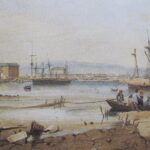

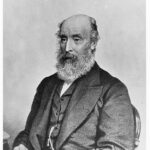
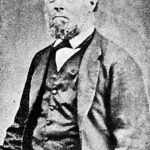
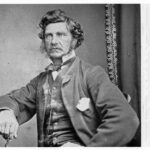
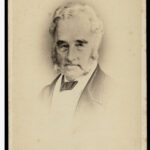
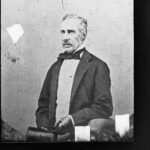

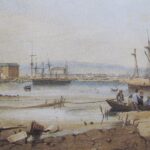
Comments
2 responses to “Ville de Bordeaux”
It is interesting to note that there possibly was built another ship named ‘Ville de Bordeaux’. It was operated in the Mediterranean Sea and was mentioned like a participant of the people rescue action after drowning of the ‘Ville de Grasse’ ship in November 1851.
Thanks for drawing that to our attention Alex, it can be quite confusing sometimes with shared names!